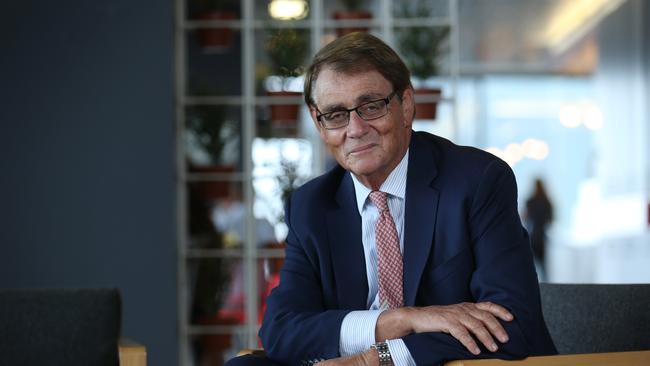
His call came after the central bank said its preconditions for rate hikes are unlikely to be met before “2024 at the earliest”.
Now, the Westpac chief economist says the official cash rate — currently at a record low of 0.1 per cent — will peak at just 1.25 per cent in 2024, due to the “sensitivity of Australia’s household sector.”
Mr Evans notes that a lift in the cash rate to 1.25 per cent would be likely to cause the household mortgage debt servicing ratio to lift to around its peaks achieved in both 2010 and 2018.
“Respectable cases could be made for peaks of 1 per cent and 1.5 per cent (official cash), but on this metric it would only be appropriate for RBA to go beyond 1.5 per cent if there was a significant risk of inflation overshooting or labour markets becoming intolerably tight,” Mr Evans said in a report on Friday.
It comes as economists scramble to predict earlier rate hikes from the RBA after a knockout May labour force report last week showed the unemployment rate unexpectedly dropped to a pre-Covid low of 5.1 per cent, as employment surged despite the end of the JobKeeper wages subsidy in March.
The Reserve Bank will decide on the future of its yield curve control and bond buying programs when it meets on July 6. It may tweak its interest rate guidance in the wake of the jobs report.
CBA’s head of Australian economics Gareth Aird this week said he expected the central bank to deliver two consecutive rate hikes in November and December of next year, taking the cash rate from 0.1 per cent to 0.5 per cent. Rates would then lift to 1.25 per cent by September 2023, he said.
Earlier this month, ANZ predicted the RBA would raise rates in 2023.
NAB predicts rate hikes are still most likely to start in 2024.
Westpac doesn’t publish economic forecasts beyond 2023 and the RBA’s latest official forecasts in its May Statement on Monetary Policy only extend to mid-2023.
But on this occasion, but Mr Evans thought it “necessary to provide some guidance for our long term views on the peak of the tightening cycle and the timing of that peak.”
“We do not envisage extreme inflation conditions during the cycle that would cause the RBA to need to overshoot policy,” he said. “Instead we expect that the inflation rate will remain within the 2-3 per cent (RBA) target band and the labour market will hold at around full employment.”
And whereas recent periods of interest rate cutting by the Reserve Bank have tended to last for “very long periods”, recent tightening cycles tend to be “much more concentrated”.
But the “upside limit” to Australia’s tightening cycle is “likely to be determined by the household sector’s sensitivity to rising rates given Australia’s high levels of household debt.”
Based on indicators of “stress levels for household borrowers”, Mr Evans says a cash rate of 1.25 per cent represents the “limit above which interest rates would be contractionary through their impact on household finances.”
“Because our forecasts of inflation and wages do not point to any overshoot during that period we do not believe it will be necessary or desirable to move policy into the contractionary zone,” said Westpac’s Mr Evans.
While below its 2019 peak of about 187 per cent, Australia’s household debt to income ratio remains high by global standards at about 181 per cent.
CoreLogic’s national house price index for June is due next Thursday with another strong rise in prospect based on historically high levels of auction clearance rates achieved in recent weeks, even though residents of Melbourne and Sydney have endured Covid-19 restrictions this month.
Considering the proportion of disposable income owner occupiers need to meet their mortgage repayments under assumptions for the average interest rates across loan types and the outlook for household incomes and owner occupier debt levels (taking account of Westpac’s house price forecasts), Mr Evans warns that an increase in the cash rate to 2.25 per cent would see a “damaging lift in servicing ratios nearing those pre GFC (global financial crisis) peaks.”
“However, it would be misleading to claim specific accuracy with this methodology,” he said.




A week ago Bill Evans predicted the Reserve Bank would lift interest rates at least a year earlier than its guidance indicated.